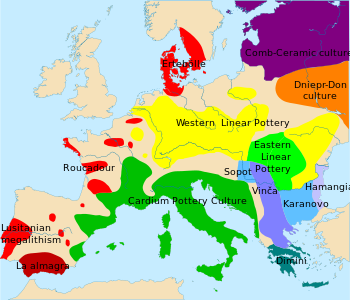فـِنّ البلطيق
 | |
| المناطق ذات التجمعات المعتبرة | |
|---|---|
| فـِنّ | 7 مليون |
| إستونيون | 1 مليون |
| Karelians | 100,000 |
| Vepsians | 6,000 |
| Izhorians | 1,000 |
| Livs | 200 |
| Votes | 100 |
| اللغات | |
| اللغات الفـِنـِّية | |
| الدين | |
| المسيحية و Uralic Neopaganism | |
| الجماعات العرقية ذات الصلة | |
| Balts، فـِنّ الڤولگا, Sami | |
فـِنّ البلطيق Baltic Finns[1] or Finnic people consist of the peoples inhabiting the region around the Baltic Sea[2] in Northeastern Europe who speak Finnic languages, including the Finns proper, Estonians (including Võros and Setos), Karelians (including Ludes and Olonets), Veps, Izhorians, Votes, and Livonians as well as their descendants worldwide. In some cases the Kvens, Ingrians, Tornedalians and speakers of Meänkieli are also included separately rather than being a part of Finns proper. The bulk of the Baltic Finns are ethnic Finns and Estonians, who reside in the only two independent Finnic nation states – Finland and Estonia. Baltic Finns are also significant minorty groups in neighbouring countries of Sweden, Norway, Russia and Latvia.
. . . . . . . . . . . . . . . . . . . . . . . . . . . . . . . . . . . . . . . . . . . . . . . . . . . . . . . . . . . . . . . . . . . . . . . . . . . . . . . . . . . . . . . . . . . . . . . . . . . . . . . . . . . . . . . . . . . . . . . . . . . . . . . . . . . . . . . . . . . . . . . . . . . . . . . . . . . . . . . . . . . . . . . .
نظريات الأصل
According to the Migration Theory that was based primarily on comparative linguistics, the proto-Finnic peoples migrated from an ancient homeland somewhere in northwestern Siberia or western Russia to the shores of the Baltic Sea around 1000 BC, at which time Finns and Estonians separated. The Migration Theory has been called into question since 1980, based on genealogy, craniometry and archaeology. Recently, a modified form of the Migration Theory has gained new support among the younger generation of linguists, who consider that archaeology, genes or craniometric data cannot supply evidence of prehistoric languages.[3]
During the last 30 years, scientific research in physical anthropology, craniometric analyses, and the mitochondrial and Y-chromosomal DNA frequencies have reduced the likelihood of the Migration Theory - a major westward migration as recently as 3,000 years ago. The Settlement Continuity Theory asserts that at least the genetic ancestors of the Finno-Ugric peoples were among the earliest indigenous peoples of Europe.[4][5][6]
The origin of the people who lived in the Baltic Sea area during the Mesolithic Era continues to be debated by scientists. From the middle of the Neolithic Era onwards, there is agreement to a certain extent among scholars: it has been suggested that Finno-Ugric tribes arrived in the Baltic region from the east or southeast approximately 4000–3000 BC by merging with the original inhabitants, who then adopted the proto-Finno-Ugric language and the Comb Ceramic culture of the newcomers. The members of this new Finno-Ugric-speaking ethnic group are regarded as the ancestors of modern Estonians.[6] The Y-chromosomal data has also revealed a common Finno-Ugric ancestry for the males of the neighboring Baltic peoples, speakers of the Indo-European Baltic languages. According to the studies, Baltic males are most closely related to the Finno-Ugric-speaking Volga Finns such as the Mari, rather than to Baltic Finns.[7] The results suggest that the territories of Estonia, Latvia and Lithuania have been settled by Finno-Ugric-speaking tribes since the early Mesolithic period.[6]
On the other hand, some linguists do not consider it likely that a Baltic-Finnic language form could have existed at such an early date. According to these views, the Finno-Ugric languages appeared in Finland and Baltic only during the Early Bronze Age (ca. 1,800 BC), if not later.[3]
الشعر الشفهي لفـِنّ البلطيق
تاريخ شعوب فـِنّ البلطيق
العصر الحجري الوسيط
العصر الحجري الحديث
حوالي 5300 BCE pottery and agriculture entered Finland.[8] The earliest representatives belong to the Comb Ceramic Cultures, known for their distinctive decorating patterns. وهذا ميَّز بداية العصر الحجري الحديث
حضارة الخزف الممشط
العصر البرونزي
العصر الحديدي
العصور الوسطى
انظر أيضاً
الهامش
- ^ ويشار إليهم أيضاً بأسماء: الشعوب البلطية-الفـِنـِّية و البلطو-فـِنـِّية
- ^ Niskanen, Markku (2002). "The Origin of the Baltic-Finns" (PDF). The Mankind Quarterly. Archived from the original (PDF) on 2 October 2008. Retrieved 2008-10-06.
{{cite web}}: Unknown parameter|deadurl=ignored (|url-status=suggested) (help) - ^ أ ب Kallio, Petri 2006: Uralilaisen kantakielen absoluuttista kronologiaa. (With English summary: The absolute chronology of the Proto-Uralic language.). Virittäjä 2006
- ^ the early indigenous inhabitants of Europe by Richard, Lewis (2005). Finland, Cultural Lone Wolf. Intercultural Press. ISBN 978-1-931930-18-5.
- ^ Niskanen, Markku (2002). "The Origin of the Baltic-Finns" (PDF). The Mankind Quarterly. Archived from the original (PDF) on 2 October 2008. Retrieved 2008-10-06.
{{cite web}}: Unknown parameter|deadurl=ignored (|url-status=suggested) (help) - ^ أ ب ت Laitinen, Virpi; Päivi Lahermo (August 24, 2001). "Y-Chromosomal Diversity Suggests that Baltic Males Share Common Finno-Ugric-Speaking Forefathers" (PDF). Department of Genetics, University of Turku, Turku, Finnish Genome Center, University of Helsinki. Retrieved 2008-10-08.
- ^ Siiri Rootsi (19 October 2004). "Human Y-Chromosomal Variation in European Populations" (PDF). Tartu University Press. Retrieved 2008-10-08.
- ^ http://www.helsinki.fi/hum/ajankohtaista/2013/01/0128b.htm

